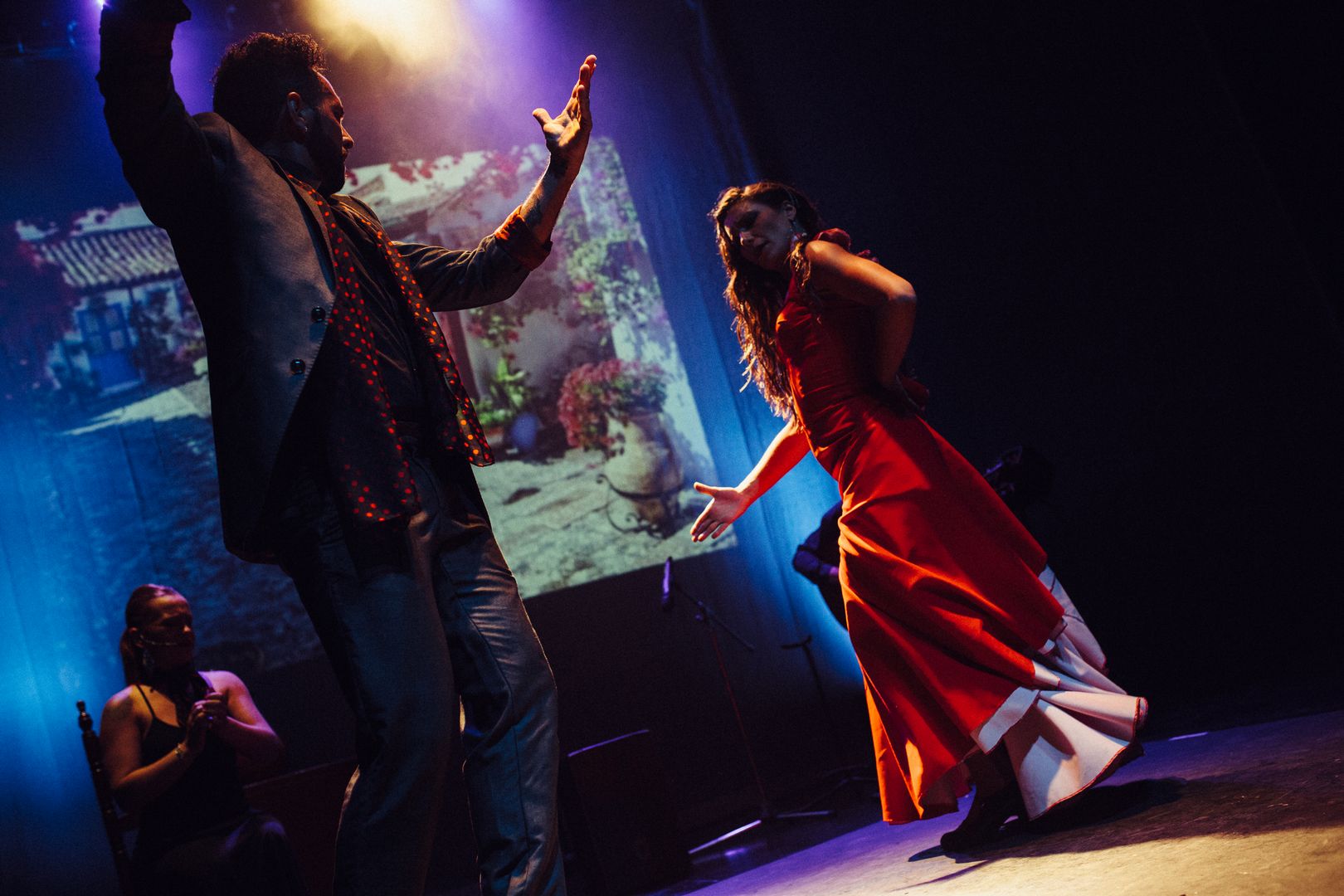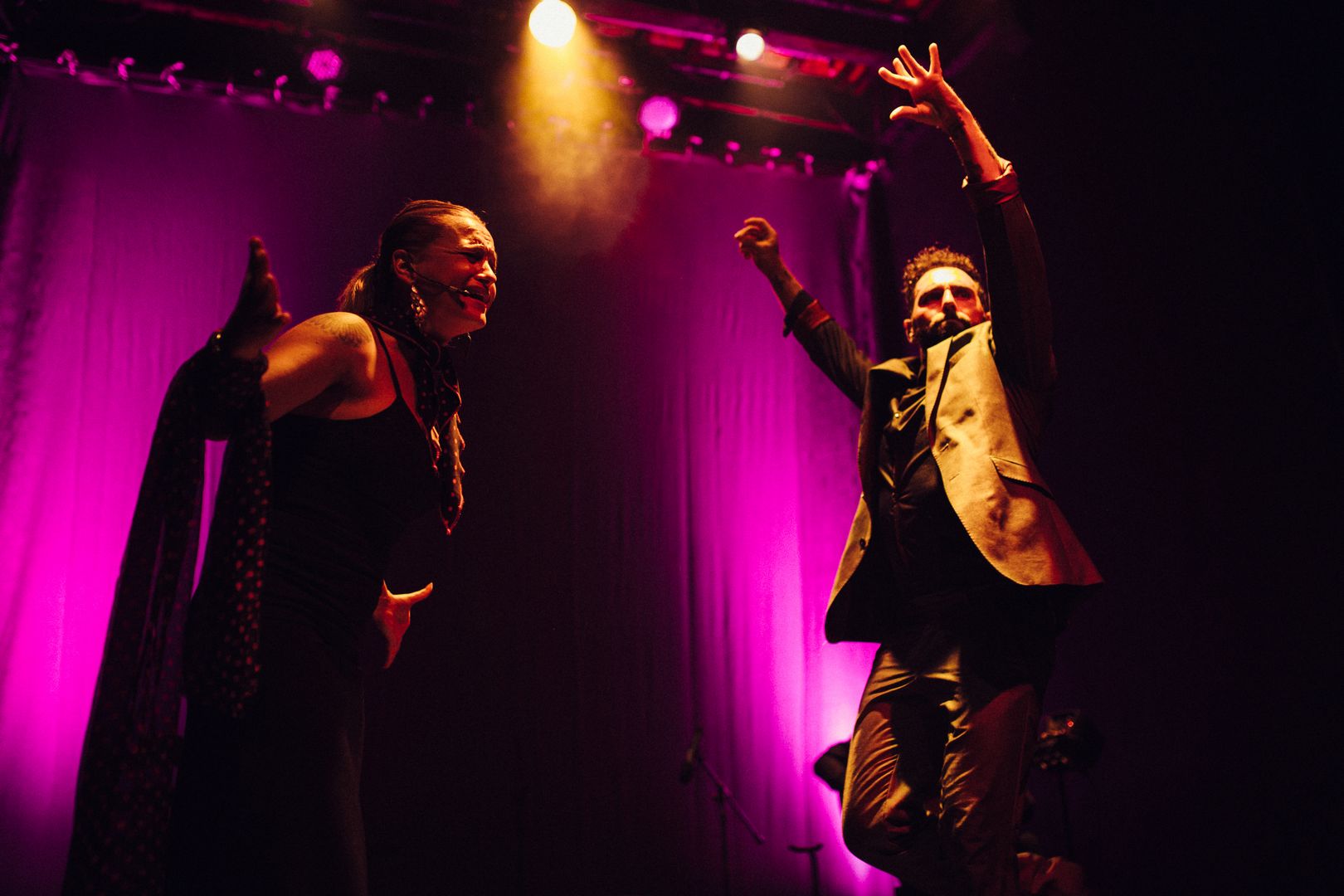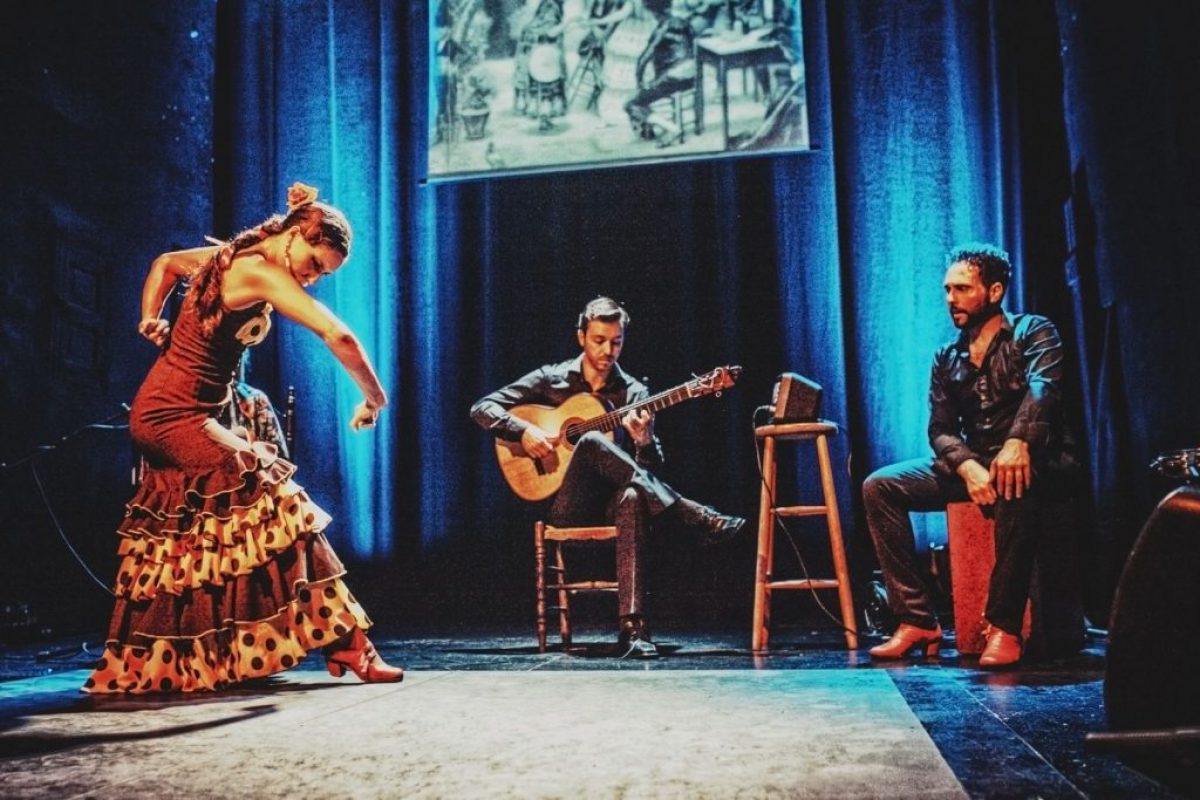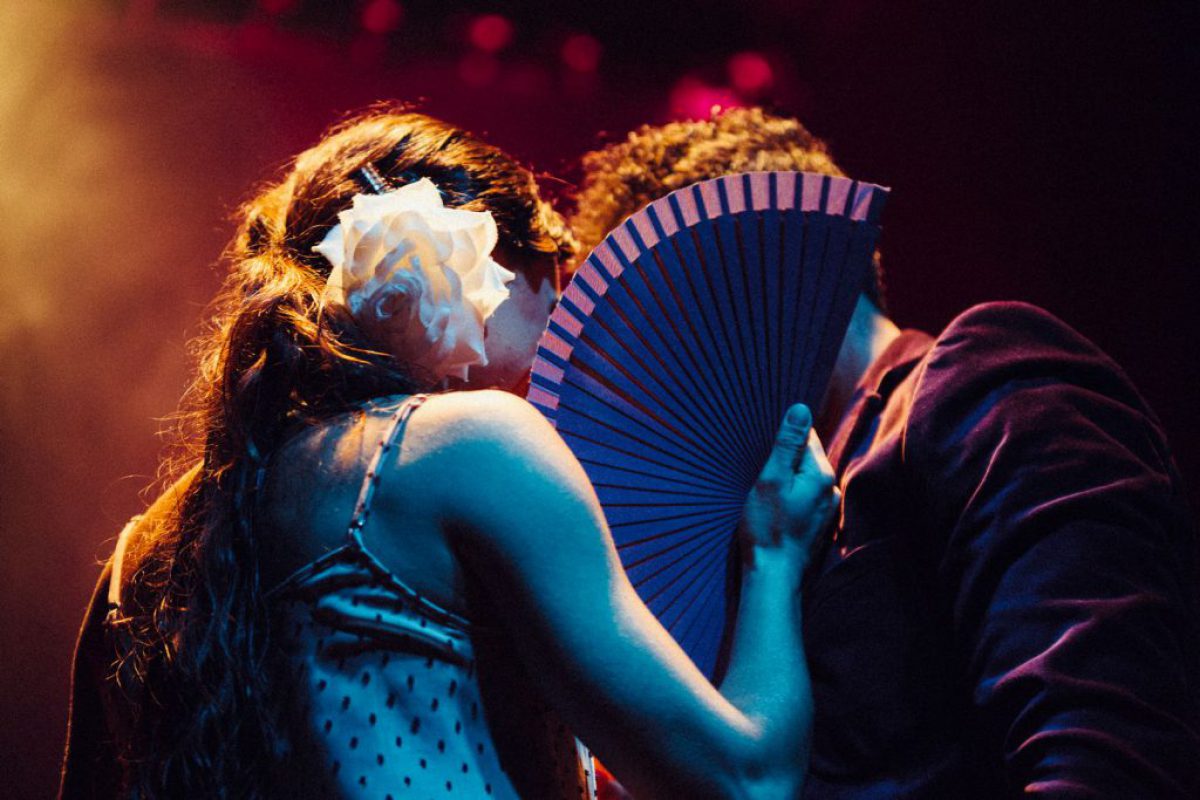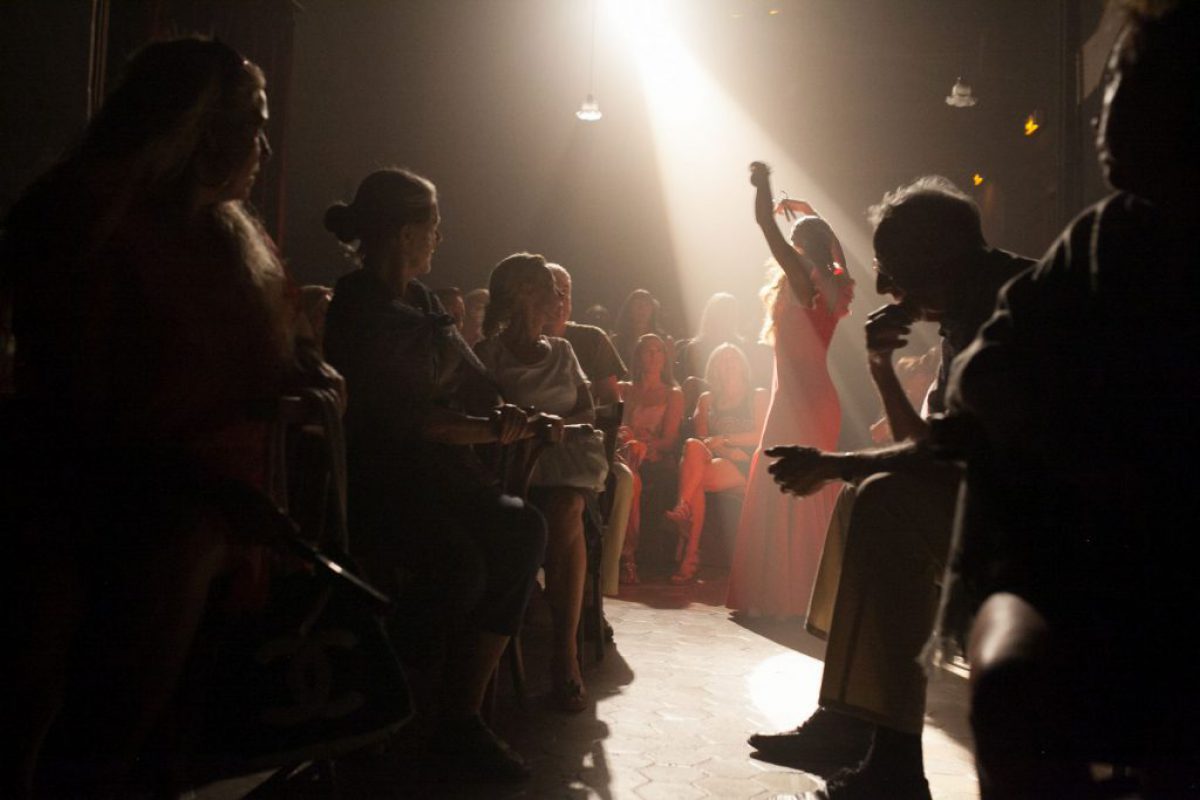WE ORGANIZE FLAMENCO EVENTS IN ANY LOCATION
Pride and passion: understanding flamenco
Flamenco may be spectacularly entertaining but that’s only part of the story. Knowing just a little about what you’re experiencing will transform your experience and appreciation.
Never give up: a brief history
Flamenco was born in southern Spain, in Andalusia. Here the traditions of the Moors, Byzantine gypsies and the native Spanish people met and mixed. Things that were impossible to put into words were expressed though dance.
Understanding what was happening in the dance formed part of the hidden knowledge of the lower levels of the population. For instance, it was one way to identify friend or foe. No wonder flamenco remained a secret, incomprehensible to most of society and passed on from master to student, generation to generation.
Perhaps unsurprisingly, the message of flamenco became: Be proud and independent, whatever the circumstances. Always be yourself and never give up.
Watch
As with the Spanish bullfight, posture and the way dancers walk are the most important aspects of their movement. The way a flamenco dancer moves expresses independence, dignity, self-respect and regard for his or her partner. It’s one way aficionados judge skill.
For example, desplante – the proud gesture of a matador facing a bull –is almost exactly the same as the stance a flamenco dancer in front of an audience. Or paseo–calmly strolling on stage – is as difficult to do as the dancing itself. Doing it well is a real sign of virtuosity.
Experience
Let sensual pride come into your heart. Feel, as have thousands of nameless flamenco dancers, contempt for the difficulties of life and the inner light that comes from the feeling triumphing over harsh circumstances.
Passion and love: plot in flamenco.
Flamenco is all about the relationship between men and women. In flamenco, the ideal relationship is difficult and explosive but a man and woman are equal. The woman demands the right to be loved. In medieval Spain, where women were traditionally subordinate, this message – even if encoded – was explosive.
Watch
In flamenco, clothing is extremely important and not just stunning. The prototype of the woman’s dress was traditional gypsy attire. Playing a graceful game with the hem is integral to the dance. When the dancer swirls her Spanish shawl, it emphasizes her slender feminine form. Draped over her shoulders it suggests a large, beautiful, restless bird. Making movements with the Spanish fan achieves the same effect.
How dancers look at each other is also significant. The right look expresses internal passion. The distances dancers keep from each other also speak volumes. When they find the right distance this becomes part of the tension that draws in the audience.
Costume, the language of the eyes and maintaining the perfect distance are all part of the soul or duende of flamenco. Duende is translated as ‘fire,’ ‘magic,’ or ‘feeling’ and it’s claimed the term was introduced by Garcia Lorca. The one thing duende is incapable of doing is repeating itself, as with the ‘appearance of a stormy sea’.
Listen
Singing in flamenco is clearly dramatic and often tragic. A special sense of drama is achieved by using specific techniques. Micro intervals areintervals smaller than a semitone. Portamento is when the artist changes from one note to another using a smooth ‘entrance’ to the next note, creating a sense of uncertainty. Palo seco, to ‘float without sails’, applies to songs performed without a guitar.
It is important, however, to understand that singing in flamenco is not a song in the usual sense of the word with a precise rhythmic structure, with verse and chorus. Rather, it’s a special type of dramatic conversation, sometimes between the dancers, sometimes public, sometimes as if the dancer is talking to themselves.
Rhythm in flamenco comes from stamping heels (zapateado), finger snaps (pitos) or handclaps (palmas). The purest form of flamenco avoids usingcastanets as these restrict the possibility of passionate and expressive play with hands.
Experience
Uncork a delicious bottle of wine, sit back and open your heart to the spectacular colours, movements and sounds.
Honouring tradition.
The song and dance forms of flamenco in the Spanish tradition are calledpalo.They differ in rhythmic patterns and stanzas metric, mood, harmony and so on. Palois not a strict category but a popular, sometimes counter-intuitive, way to classify the flamenco styles, based on their similarities.
Some artists say that adhering strictly to tradition makes it possible to understand flamenco more deeply. Others believe that the forms of flamenco are like a living organism that develops constantly.
Our show embodies the pure and authentic sounds of deepest Andalusia, the land of Manuel de Falla, Pablo Picasso and Federico Garcia Lorca, all of whom marvelled at its beauty.
Observe
A typical Flamenco Night performance is a series of in different styles, accompanied by singing.
Each part is a collection of poems (copla, tercio or letras) with guitar interludes called falsetas. Typically, the guitarist also performs a short introduction that sets the tone, compass and tempo of the song.
The concept of compass is fundamental to flamenco. If flamenco is performed without a guitarist, compass is given by clapping hands or tapping knuckles on the table. A guitarist can set compass by hitting the top of the guitar’s body. Changing chords drives the drama along.
Experience
Don’t hesitate to express your own emotions. Support performers the way you want to. The sincerer your emotions are, the more likely it is that you’ll feel the power of flamenco. Remember, flamenco is not the performing arts, but rather street art
Now, enjoy the magic of flamenco with us.

